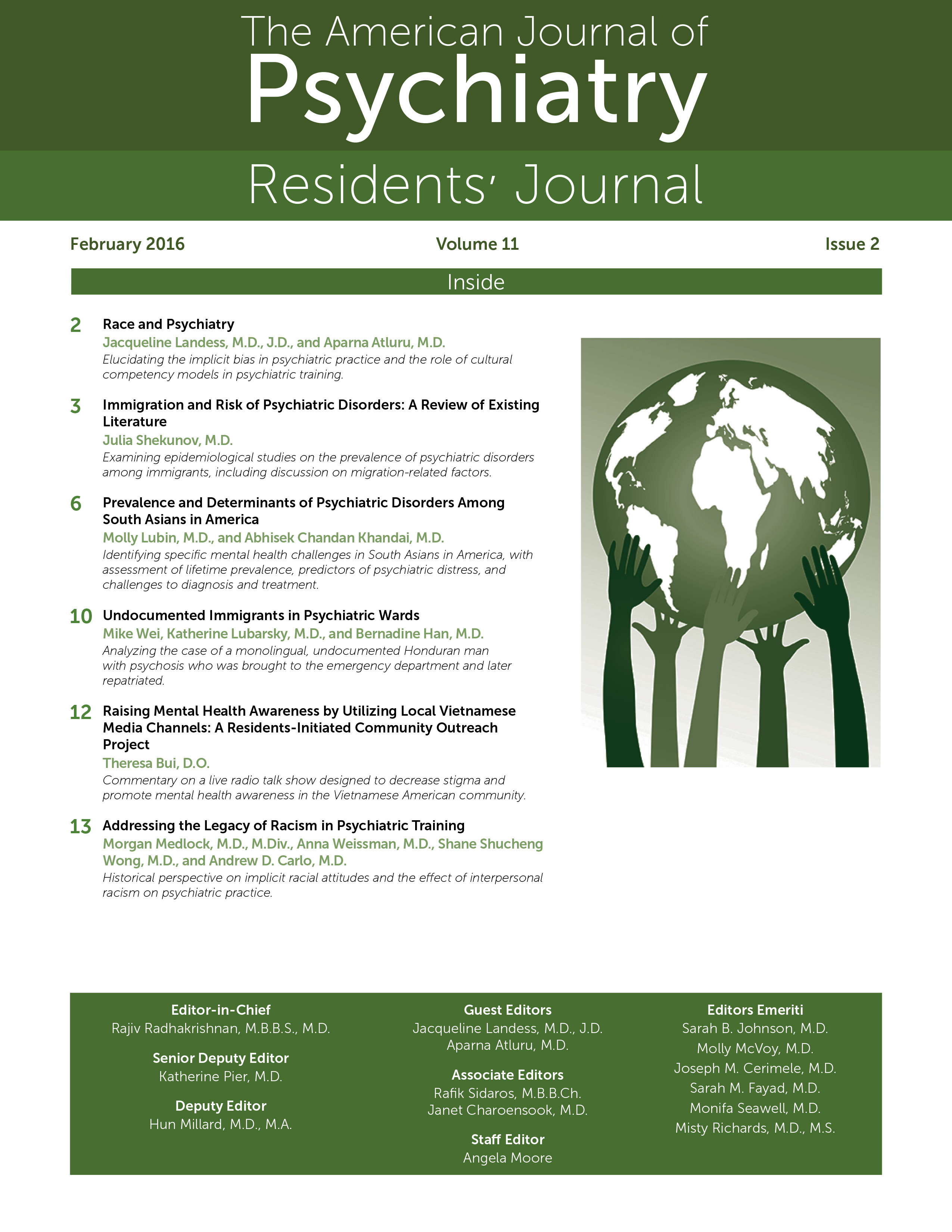Prevalence and Determinants of Psychiatric Disorders Among South Asians in America
Asian Americans as a Single Racial Category in Epidemiological Research: History and Overview
Prevalence of Psychiatric Disorders Among South Asians
Determinants of Mental Health Among South Asians
| Determinant (by Subpopulation) | Mental Health Outcome |
|---|---|
| South Asian American women | |
| Being born in the United States, as opposed to having immigrated | Statistically significant* increase in 30-day psychologic distressa |
| Low extended family support | Statistically significant* increase in 30-day psychologic distressa |
| South Asian American men | |
| Financial strain | Highly statistically significant** increase in 30-day psychologic distressa |
| Presence of family-cultural conflict | Statistically significant* increase in 30-day psychologic distressa |
| Low social position in South Asian community | Highly statistically significant** increase in 30-day psychologic distressa |
| High social position in American community | Highly statistically significant** increase in 30-day psychologic distressa |
| Canadian-born South Asians | |
| Unemployment | Statistically significant increased odds of having a mood disorderb |
| Physical inactivity | Statistically significant increased odds of having a mood disorderb |
| South Asian immigrants to Canada | |
| Female gender | Statistically significant increased odds of having a mood disorderb |
| Food insecurity | Statistically significant increased odds of having a mood disorderb |
| Poor physical health | Statistically significant increased odds of having a mood disorder and statistically significant increased odds of having an anxiety disorderb |
| Smoking | Statistically significant increased odds of having a mood disorderb |
| Having immigrated before 17 years of age | Statistically significant increased odds of having a mood disorder and statistically significant increased odds of having an anxiety disorderb |
Challenges to Diagnosis and Treatment
Special Considerations
Future Directions
Key Points/Clinical Pearls
References
Information & Authors
Information
Published In
History
Authors
Metrics & Citations
Metrics
Citations
Export Citations
If you have the appropriate software installed, you can download article citation data to the citation manager of your choice. Simply select your manager software from the list below and click Download.
For more information or tips please see 'Downloading to a citation manager' in the Help menu.
View Options
View options
PDF/EPUB
View PDF/EPUBGet Access
Login options
Already a subscriber? Access your subscription through your login credentials or your institution for full access to this article.
Personal login Institutional Login Open Athens loginNot a subscriber?
PsychiatryOnline subscription options offer access to the DSM-5-TR® library, books, journals, CME, and patient resources. This all-in-one virtual library provides psychiatrists and mental health professionals with key resources for diagnosis, treatment, research, and professional development.
Need more help? PsychiatryOnline Customer Service may be reached by emailing [email protected] or by calling 800-368-5777 (in the U.S.) or 703-907-7322 (outside the U.S.).
